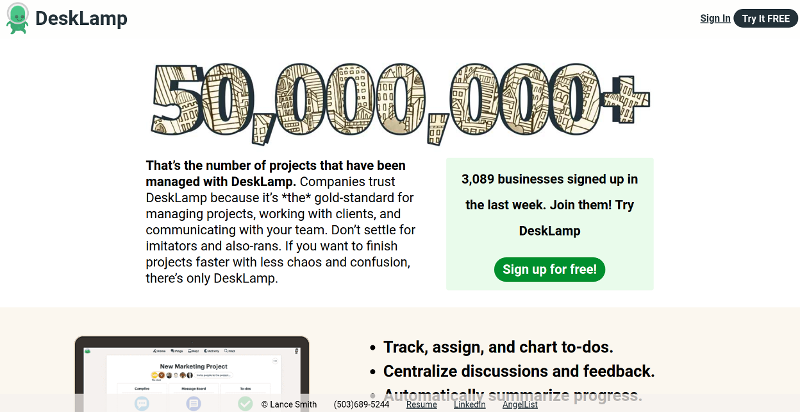DeskLamp
DeskLamp is an app for teams of people to track tasks and communicate across their company, team, or projects. It is modeled after the website Basecamp.
- DeskLamp provides users with a modular set of tools to manage tasks across all levels of a company
Technologies Used
Backend
- Ruby on Rails was used for the Model and Controller part of MVC handling data from a Postgres database
- The Rails setup provided a lot functionality by default making it simple to build models with validations and assocations
- Jbuilder was used to build JSON responses that are being sent to the React / Redux frontend for rendering
- BCrypt is used to securely store user passwords by salting and hashing the passwords before saving them to the database
attr_reader :password
def password=(password)
@password = password
self.password_digest = BCrypt::Password.create(password)
end
def is_password?(password)
BCrypt::Password.new(self.password_digest).is_password?(password)
end
def self.find_by_credentials(email, password)
user = User.find_by(email: email)
if user && user.is_password?(password)
return user
end
return nil
end
def ensure_session_token
self.session_token ||= generate_session_token
end
def reset_session_token
self.session_token = generate_session_token
self.save
self.session_token
end
private
def generate_session_token
SecureRandom.urlsafe_base64(16)
end
Frontend
- React was used for building all of the views rendered in the browser
- Alongside React, Redux was used to manage the App's state
- Jbuilder made it easier to keep the state flat so complicated logic was not needed for retrieving data within the state
Production
- DeskLamp is stored in a repository on GitHub and was deployed to Heroku for production
How It Works
- Users just need to click sign up to setup an account that requires a valid email, name, and password.
- A company must be created t which will serve as the default landing page for a user. This then generates a default company hub.
- From there the user will have access to all of the task tracking features. Like posting to a message board and creating to-do lists
Challenges
- Linking Users to Organizations
- I had to create a joins table linking users to organizations because they share a many-to-many relationship
- When a user creates an organization the organization controller creates an entry in my joins table between the user and organization

